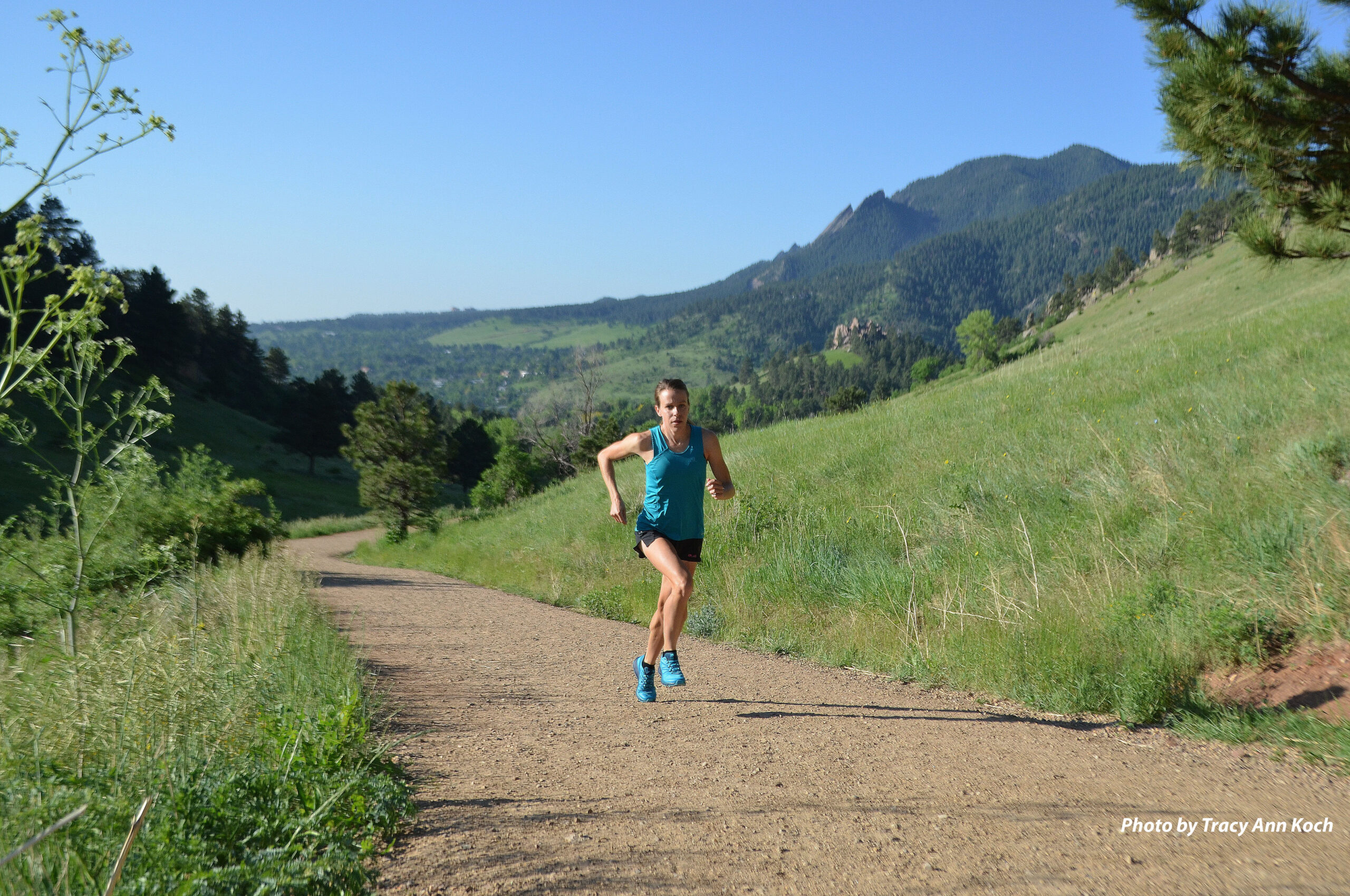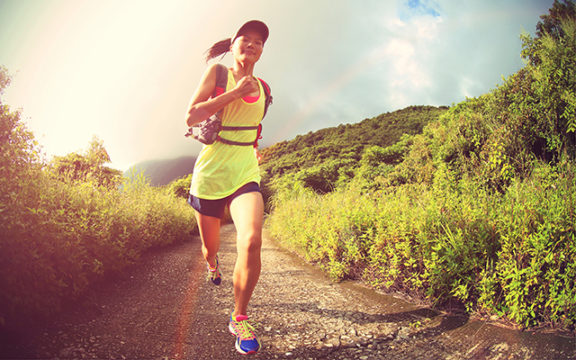Dispatches from Columbine – Strategy Session: Your Leadville Plan of Attack
By Dave Wiens
A good race is often the product of a good plan. Whether you’re the type to let lists keep you up at night, or you consider spontaneity to be one of your better qualities, your Leadville experience will benefit from at least a little bit of advance strategy.
This week Dave Wiens has us pondering a few key strategies as we approach the big day, from training and equipment to nutrition and crewing. And then there’s that ubiquitous question: What should I wear?
You don’t show up in Leadville on a wing and a prayer. Well, some riders do, but for most, the LT100 is the culmination of careful planning and preparation — in fact, that process is part of what makes this race so compelling. Approaching the race with a plan doesn’t necessarily guarantee you’ll go home sporting new hardware, but it definitely doesn’t hurt.
A solid strategy pays dividends for most of us and could be the difference between the big and small buckle, between finishing in 12:15 or finishing in 11:45. It could even mean the difference between rolling onto the red carpet at all, period.
As race day looms closer, think about how you might implement a few of the following strategies.
Training Strategy
You should have your training strategy pretty well in the hopper by now, but whether you have been working with a coach for a year or you’ve just been riding as your schedule permits, you will want to pay special attention to how you approach the next few weeks. Here is a typical breakdown of the broad scope of my training for the LT100.
December through March – Winter cross training, which translates to little, if any, biking. Instead, I swap in a variety of workouts including skiing, lifting weights and playing hockey.
April through June — I ride road and mountain bikes by feel, with an eye toward increased intensity and duration. This phase usually culminates in racing the Firecracker 50 in Breckenridge on July 4th, followed by a small taper and then three to four days completely off of the bike.
Five weeks prior to the LT100 — This is my time for high quality, structured training, the goal being to peak on the second Saturday in August (race day!).
The week prior to the LT100 — I pay careful attention to my riding in the week before the race and typically ride Monday, Tuesday and Wednesday (although it can be tricky to determine how much and how hard to ride), with a rest day on Thursday.
The day before the LT100 — The decision to ride (or not) the day before the race is an important strategic one. I like to do a decent ride the day before so that my body is primed for the race effort. I usually ride St. Kevins, Sugarloaf and the Powerline descent slow and easy (starting from the parking lot by the railroad tracks near the beginning of the dirt).
Equipment Strategy
This is a comprehensive category, starting with the type of bike you will ride (a decision you likely have already made: hardtail, full-suspension, 29er, singlespeed, tandem, Big Wheel?). Then it’s onto wheel/tire/tube strategy (see my Dispatch from the June 22nd newsletter for a more detailed discussion on that topic), gearing, weight, lube, tools, and hydration.
Weight — Will you try to ride the lightest bike possible, analyzing each and every part right down to bottle cages and grips? That’s what I have strived for, more or less, since 2007.
Lube — What lube are you going to use to last 100 miles? I use lube and grease. Yes, grease. That’s something I learned from John Tomac back in the day, and even though I still carry a small bottle of lube during the race, I’ve never had to stop to lube my chain in the LT100. (Applying the grease is a bit messy. I suggest rubber gloves.)
Tools — What tools will you bring and how will you carry them? When it comes to packing stuff, you have three choices (this also applies to nutrition, hydration, extra clothing and any other items you might bring): Store stuff on your bike, on your body (usually in pockets), and/or in a backpack or fanny pack. I keep certain tools and repair items in my favorite seat bag, the Topeak ProPack. (For more on packing for the ride, see the next section.)
Hydration — Will you use bottles or a hydration pack? My strategy is to have my hydration in bottles in two bike-mounted bottle cages. Hydration packs are another option, and they allow ease of drinking on virtually all trail conditions, plus plenty of stowing space. The disadvantages of those packs include having to ride with that weight and mass strapped to your body, difficulty retrieving items from the pockets, and time-consuming refills.
Stowing Strategy
One hundred miles is a long haul, and it requires a lot of stuff. Here is how I divvy it up.
In my jersey pockets:
My left pocket holds my Topeak Mini 20 Pro multi tool and an old school Powerbar.
In my middle pocket goes an extra tube and small bottle of lube (sometimes I include a lightweight rain jacket if the sky looks threatening).
In my right pocket is a stash of non-caffeinated GU Roctane gels to get me to the Twin Lakes Aid Station. (The wrappers, including the tear-off tab, go under the lower hem of my shorts. Yeah, they’re sticky but you’re not exactly staying clean out there. Please don’t be a litterbug mountain biker.)
In my seat bag:
This is the spot for another tube; a tire boot for a ripped sidewall (try a dollar bill or Tyvek material from a FedEx mailing pouch); master chain link; two tire levers; spare CO2 head and maybe a spare CO2 cartridge.
On my bike:
My inflation device gets mounted below the seat bag on the seatpost or on the top tube behind my stem.
Nutrition Strategy
My own nutrition strategy is anchored by balance — there is very little I won’t eat, from beef, fish, chicken, vegetables, fruits, grains, cereals, snacks and desserts. I have, however, developed some specific nutritional habits in the weeks before Leadville.
The week or two prior — Here the only change I’ll make is to try to cut out junk food snacks and limit myself to one (ok, maybe two) of my wife Susan’s cookies per day.
The day before — Cereal and banana for breakfast, a turkey sandwich and a V-8 for lunch, then fruit for a snack. Dinner will consist of pasta with red sauce, bread, salad, and maybe a slice or two of pizza. I don’t eat any meat and just drink water.
Race morning — Two-and-a-half to three hours before the start I have coffee, orange juice, a bagel, pancakes, a banana, and maybe some leftover pasta from the night before.
During the race — I’ve switched up brands over the years but these days I have GU product in my bottles. I might eat that old-school Powerbar on my coast down toward Turquoise Lake and I’ll do GU Roctane gels without caffeine until late in the race. I’ll eat one or two with caffeine later on if my stomach is still okay. At the inbound Twin Lakes aid station I’ll snag a PB and J bagel on the way to Pipeline. It never tastes good and it doesn’t go down easy, but I’m better off if I choke it down. At Pipeline inbound, I’ll pick up a small can of Starbucks Doubleshot, carry it over Powerline, then pop the top and drink it on Hagerman Pass.
Aid Station Strategy
You need to decide if you will race with or without a support crew, whether you will use the bag drop, and at which of the aid stations you’ll make stops.
Do you want a support crew out on course at any of the aid stations? You can race without a crew if you use the nutrition and hydration supplied by the neutral aid stations. They are well stocked and will get you through the race, assuming you’re not picky.
If you’re going to have a crew, they’ll need to know how to get to the aid stations and you’ll need to be able to find them in the chaos. You should know that crews generally have a hard time getting from Pipeline to Twin Lakes — and vice versa — to feed the same rider at both aid stations. You may need to plan for multiple crews, one at each aid station. Either way, you’ll need to take time the night before to organize the items that you want the crew to have ready for you.
Your crew can also supply you with mechanical support. They can have on hand everything from spare wheels and tires, tubes and tools, pedals, a seat, seatpost and seatpost clamp (ask Tinker how nice it would have been to have one of these at Twin Lakes in 2010) — anything and everything you may possibly need. The only things you cannot replace by rule are your frame and forks. Think this one through, though — it would be a challenge to so comprehensively stock both aid stations.
Finally, if you have a crew, you can drop or add clothing. Ditch the vest and arm warmers as it warms up, or pick up a rain jacket if the weather has turned nasty. In 2010, I stopped at Twin Lakes outbound for warm gloves since I couldn’t feel my hands and it looked like snow on Columbine.
During the race, I’ll skip Pipeline Aid Station outbound and take a feed at Twin Lakes both ways. Then Susan races to Pipeline just in time to hand me my bag, and that’s it ’til the finish.
Another option is to use the bag drop. You pack your bag, drop it at the designated location by the deadline on the day before the race, and the race organizers deliver it to the top of Columbine.
Clothing Strategy
What are you going to wear during the race? Temperatures are often in the upper-30s at the start, so I suggest wearing a large, puffy jacket if you have a long wait in the starting corrals (you’ll need to have someone to hand it off to before you go). Most years, I start with no extra clothing and just wear a short sleeve jersey and shorts. I’m so keyed up at the start that I don’t even feel the cold during the initial 10-minute zoom downhill. It does tend to warm up quickly, though (something to do with climbing St. Kevins, I suppose).
The weather in 2010 was drastically different. It was warmer but stormy at the start. We couldn’t count on it to warm up and it looked like it was snowing on the peaks. I wore arm warmers and a vest the whole way and, as mentioned earlier, stopped for warm gloves, too. You just never know what the weather’s going to do around Leadville.
Which is why I think it’s smart to put some thought into these various strategies and plan their execution long before you arrive. There is much to be done the day before the race and riders new to the LT100 usually underestimate the extent of the preparation and the amount of time that it takes. Plan accordingly!
Happy training and planning!


